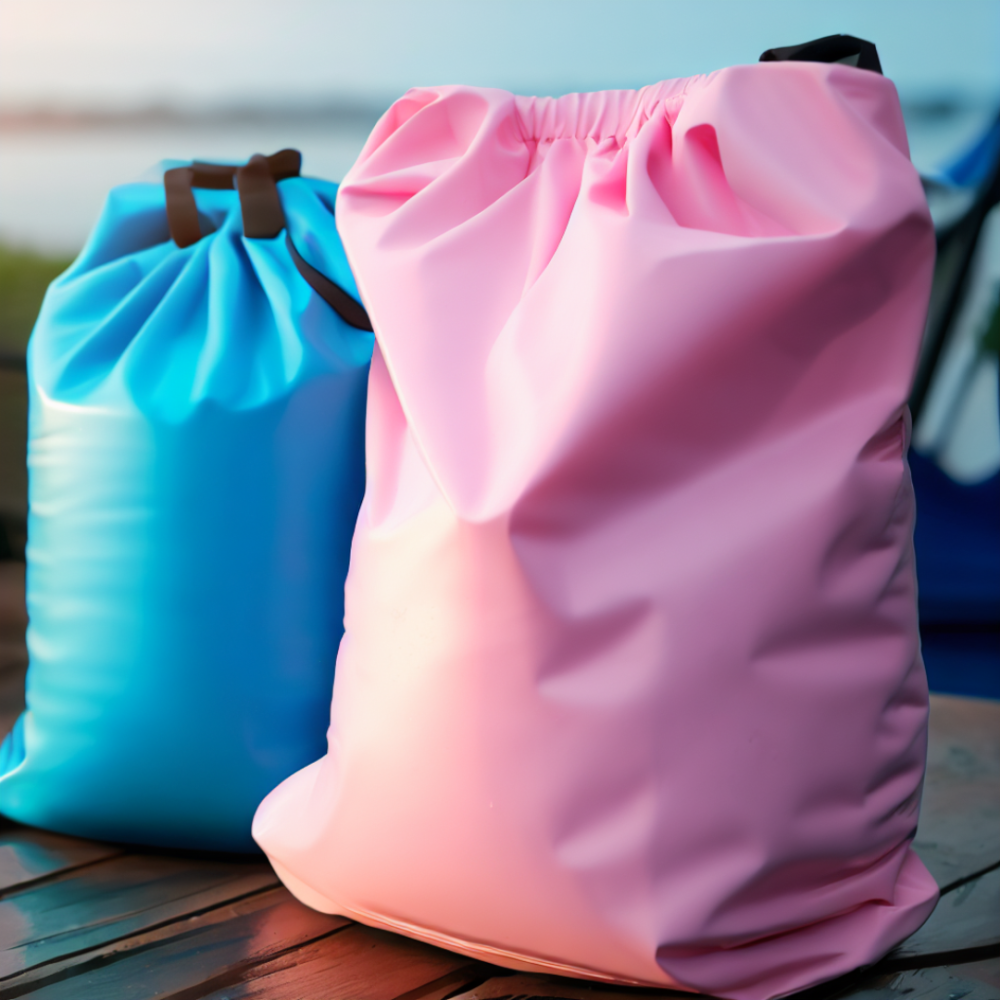Waterproof vs Water-Resistant Backpacks: Which One is For You?
One of the worst things is getting caught in the rain on your way to school. Your belongings can get soaked, plus if you have a laptop or any electrical device in your bag, it can get drenched and damage that as well.
This is why most people look for water-resistant or waterproof bags when buying a backpack. But there are thousands of options in the market, and some backpacks are said to be water-resistant, and some are advertised as waterproof. So what’s the difference?

This article gives explanations and comparisons of these two different backpacks, so you can make a good choice when picking a customisable promotional backpack
What’s the Main Difference Between Waterproof and Water-Resistant?
The difference between the two materials is already stated in their name. A waterproof backpack completely repels water, meaning no amount of moisture will go through the material. Meanwhile, a water-resistant backpack only resists water, which means at some point, water can get through the material of the backpack.
That is the most simple way of explaining the difference between the two. But there are other factors like the level of water-resistance and amount of waterproofness that are created for commercial purposes.
Water-Resistant Bags
While these backpacks offer water resistance, their ability to repel water and the duration of protection can still be lacking. Some water-resistant backpacks can be as close as being waterproof, but they are still just water-resistant.
- Material - Water-resistant backpacks usually use materials found in various bag types, like nylon, cotton, and other plastics. On their own, these materials do not repel water, but manufacturers use specific techniques to make them "water-resistant." Some manufactures apply a coating over the material, like polyurethane (PU), polyvinyl chloride (PVC), or thermoplastic elastomers (TPE). This type of coating is mostly responsible for repelling water but can be washed away after a period of time.
- Build - The composition of a backpack can significantly impact its water-repelling capabilities. But its build also plays an important role in its water resistance. If the backpack is not properly constructed, water can easily infiltrate the interior even if it’s made of water-resistant materials. The bag’s zipper can also affect its water-repellent capabilities. When water passes through the zipper’s teeth, there’s a big chance that water can enter the backpack. Some bags have a splash guard or a fold over the zipper of the bag, which can prevent water from entering the backpack.
Waterproof Bags
Waterproof bags can completely prevent water from entering your bag. Whether encountering heavy rain or submerging the bag underwater for an extended period, the contents inside your backpack will remain perfectly dry if you use a waterproof bag.
- Material - Waterproof fabrics are crafted using multiple layers arranged in a crisscross pattern, making sure there are no gaps for moisture to seep through. To further enhance and optimize the waterproof performance of backpacks, many companies use waterproof materials as the base and add an additional water-resistant coating on top of it.
- Build - In order for a bag to be truly waterproof, every last bit of detail on the exterior of the bag must be waterproof. Manufacturers use a production technique called Ultrasonic Welding (or RF Welding). This is a high-end production technique, so products created by this method are still decently rare on the market. In this technique, two pieces of cloth are fused together. So the two edge pieces of material are carefully aligned and held together under pressure. Waterproof zippers can also be engineered to prevent water penetration. However, they may be harder to open, need regular lubrication and maintenance, making this type of zipper rare in the market.
So Which Kind of Bag Is Meant for You?
If you’re stuck between a water-resistant and a waterproof bag, you should consider the above factors. In addition, your decision should also depend on the specific conditions where you’ll be using your backpack. Assessing the potential exposure to water and the level of protection that you will possibly encounter should guide your decision-making process.
Most of the time, you don’t need a completely waterproof bag. Most water-resistant backpacks in the market can repel enough water under most circumstances. Waterproof bags are specialised products, and they are best suited for people who go through heavy rain or rigorous activities like extreme sports.